Best PCIe 4.0 SSDs 2024: Up your storage game
Most computers and storage drives still use the common SATA or PCIe 3.0 interfaces to sling your bits of data around, but if you’re lucky enough to own a relatively modern PC, you might be able to upgrade to a solid-state drive (SSD) built on the insanely fast PCIe 4.0 protocol.
We’ve tested several PCIe 4.0 SSDs and the best one to cross our labs thus far is the Solidgm P44 Pro in a field of tough contenders thanks to ferociously fast speeds only rivaled by next-gen PCIe 5.0 SSDs.
Read on to learn more, including what to look for in PCIe 4.0 SSD.
Why you should trust us: We’re not called PCWorld for nothing. Our reviewers have been testing PC hardware for decades. Our storage evaluations are exhaustive, testing the limits of every product — from performance benchmarks to the practicalities of regular use. As PC users ourselves, we know what makes a killer product stand out. Only the best SSDs make this list. For more about our testing process, scroll to the bottom of this article.
Updated May 13, 2024: If you’re looking ahead to the next generation of cutting-edge storage, check out our recent review of the PCIe 5.0 Teamgroup Z540 SSD. It’s not the fastest PCIe 5.0 drive we’ve tested, but it comes in second, and comes at up to 4TB capacity.
Solidigm P44 Pro SSD – Best PCIe 4.0 SSD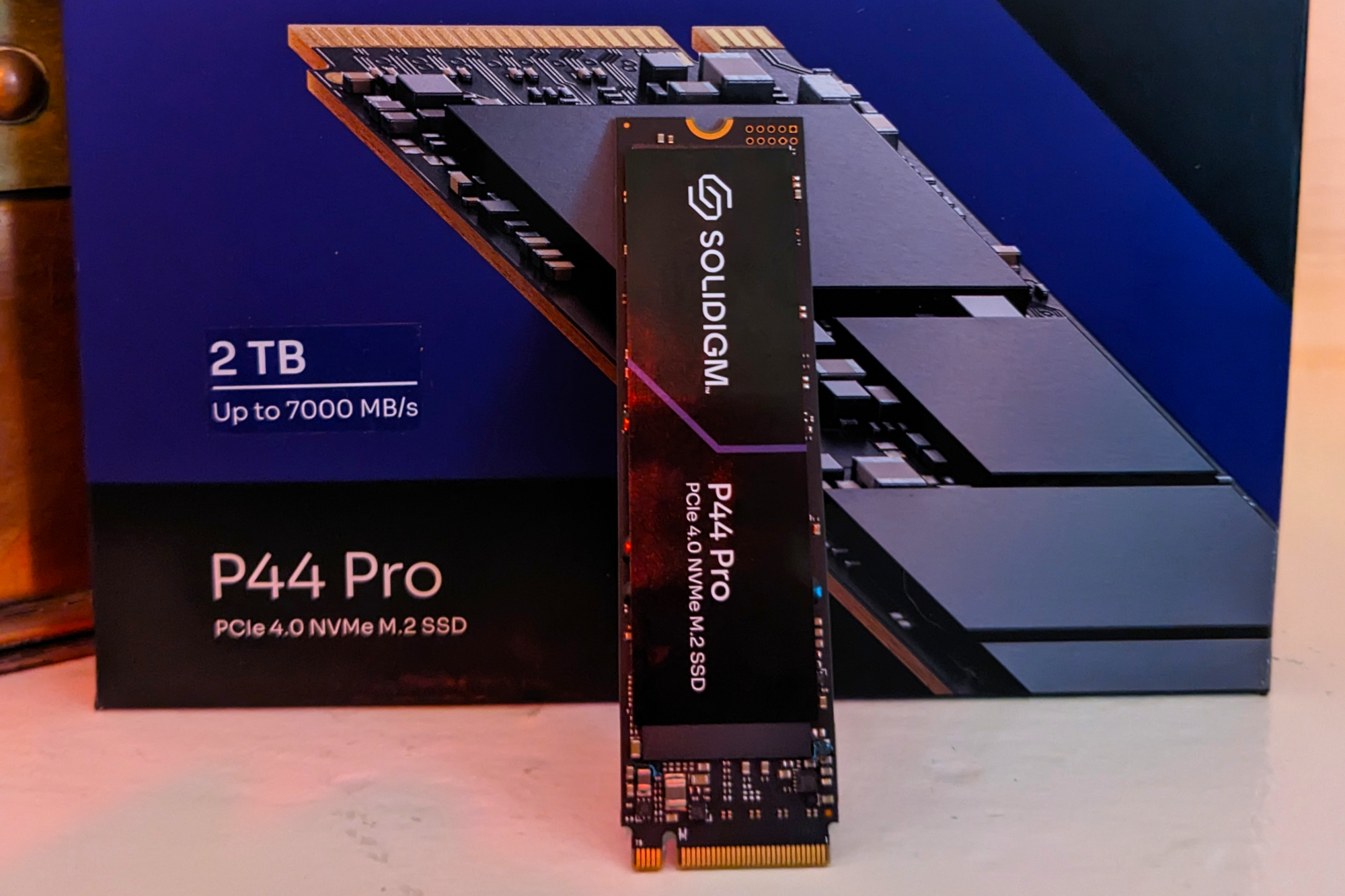


Pros
- Fastest PCIe 4.0 SSD to date
- DRAM facilitates excellent random performance
- Synergy low-level Windows driver improves random performance further
Cons
- Inconsistent pricing on web
The Solidigm P44 Pro is without a doubt the fastest PCIe 4.0 drive we have ever tested. In fact, it finished within the top five fastest drives in our tests, and was only beaten by three next-gen PCIe 5.0 drives. Plus, by installing the Solidigm Windows driver you can further improve random performance in small read/writes making it even faster during everyday use.
Not only is the Solidigm P44 Pro performance top-notch, but it also has a very reasonable price so long as you shop at the right place—we found that pricing varies widely online from retailer to retailer. This is not only the best PCIe 4.0 drive on the market, but also one of the best SSDs period. And despite stiff competition from a crowded field of other excellent PCIe 4.0 drives it holds its own at the top.
Read our full Solidigm P44 Pro review WD Black SN850X – Best PCIe 4.0 SSD runner-up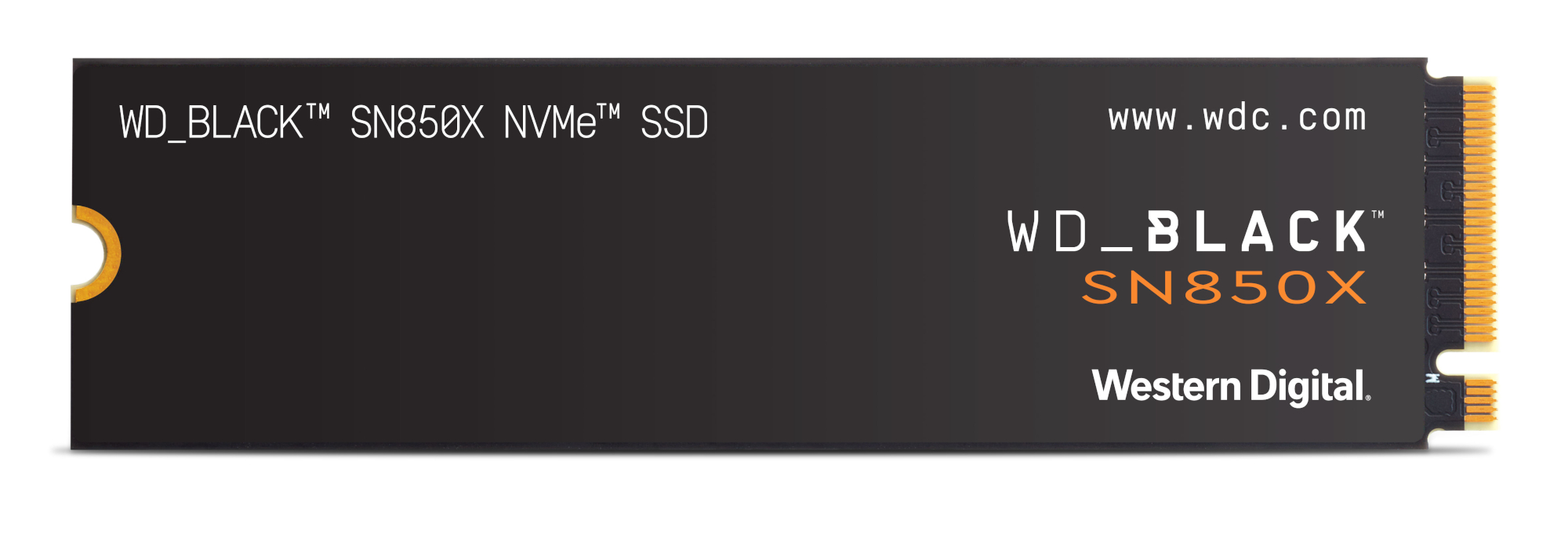


Pros
- Excellent performance
- Decently affordable given its speed
- Available up to 4TB
- Optional heatsink for 1/2TB models
Cons
- Pricey per gigabyte
- Somewhat parsimonious TBW ratings
The WD Black SN850X is a screaming-fast drive and ranks right up next to the FireCuda 530 near the top in terms of speed. The reason the WD Black SN850X edges out that drive as our pick for best PCIe 4.0 runner-up is that it offers better value for the money—not only does it give you the same great speed as the FireCuda, but it does so at a lower price per GB.
Also, in terms of overall performance, the SN850X stands out with its excellent real-world transfer rates and outstanding random write performance. In the crowded field of great PCIe 4.0 SSDs, the WD Black SN850X holds its own despite stiff competition.
Read our full WD Black SN850X review WD Blue SN580 SSD – Best budget PCIe 4.0 SSD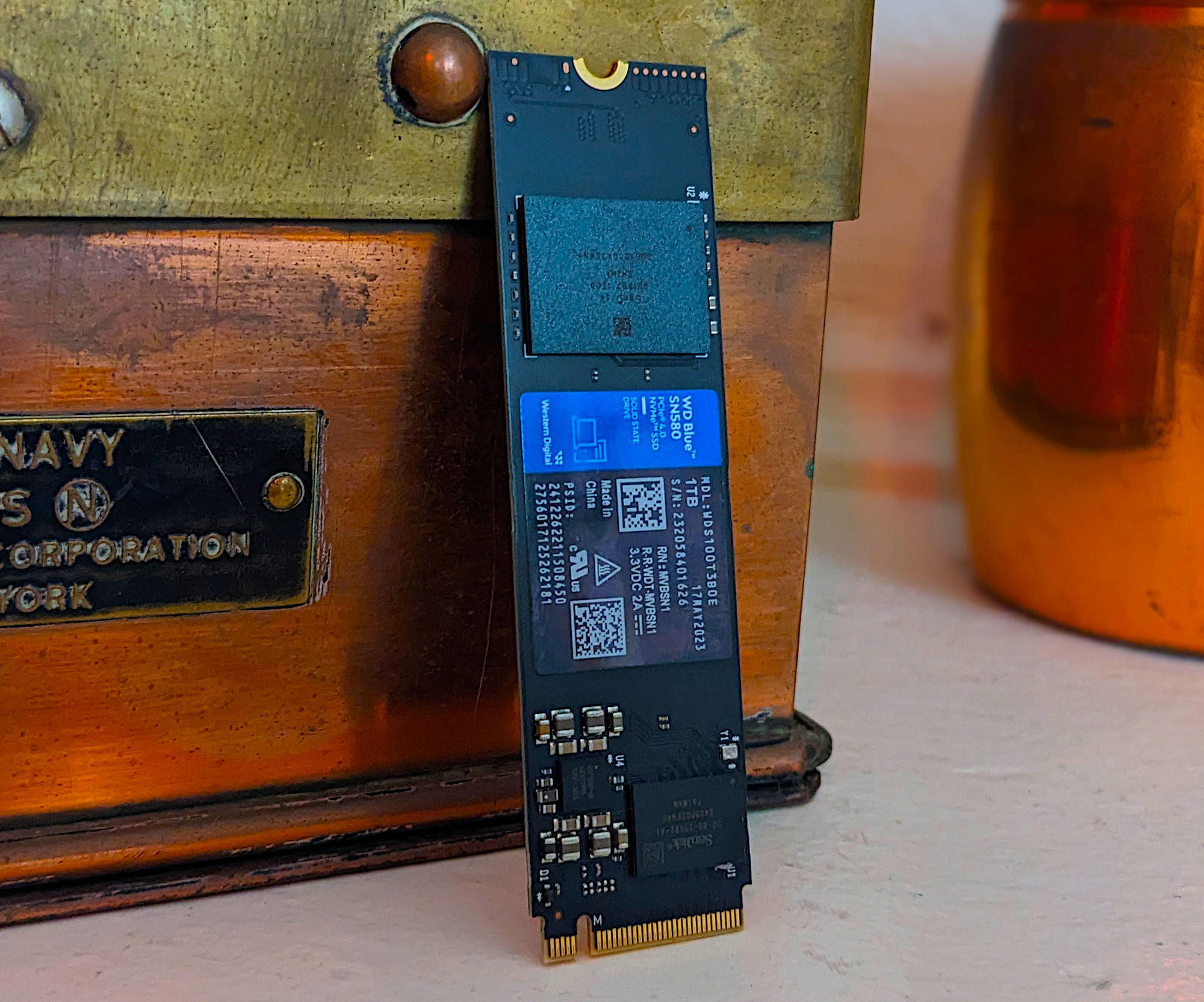


Pros
- Fantastically affordable
- Super fast real world transfers
- Single-sided for laptop upgrades
Cons
- Slows to less than 300MBps when writing off secondary cache
- Slightly low endurance rating
Now with the very first signs of PCIe 5.0 drives coming to market, we’re finally starting to see companies offering budget PCIe 4.0 NVMe drives at compelling prices. The best of the affordable bunch? The WD Blue SN580 NVMe SSD. At just $70 for a 1TB model at the time of writing, and with speedy transfers, you won’t likely find a better value PCIe 4.0 drive.
In our testing, the SN580 turned out both stellar benchmark and real-world results. Admittedly, it slowed down considerably in the large 450GB transfer test, but seeing as how it’s unlikely anyone will write that much contiguous data, it likely doesn’t matter. When all is said and done, the SN580 is a super-affordable, wonderfully high-performing PCIe 4.0 SSD. It simply can’t be beat at this price point.
Read our full WD Blue SN580 review Solidigm P41 Plus – Best budget PCIe 4.0 SSD runner-up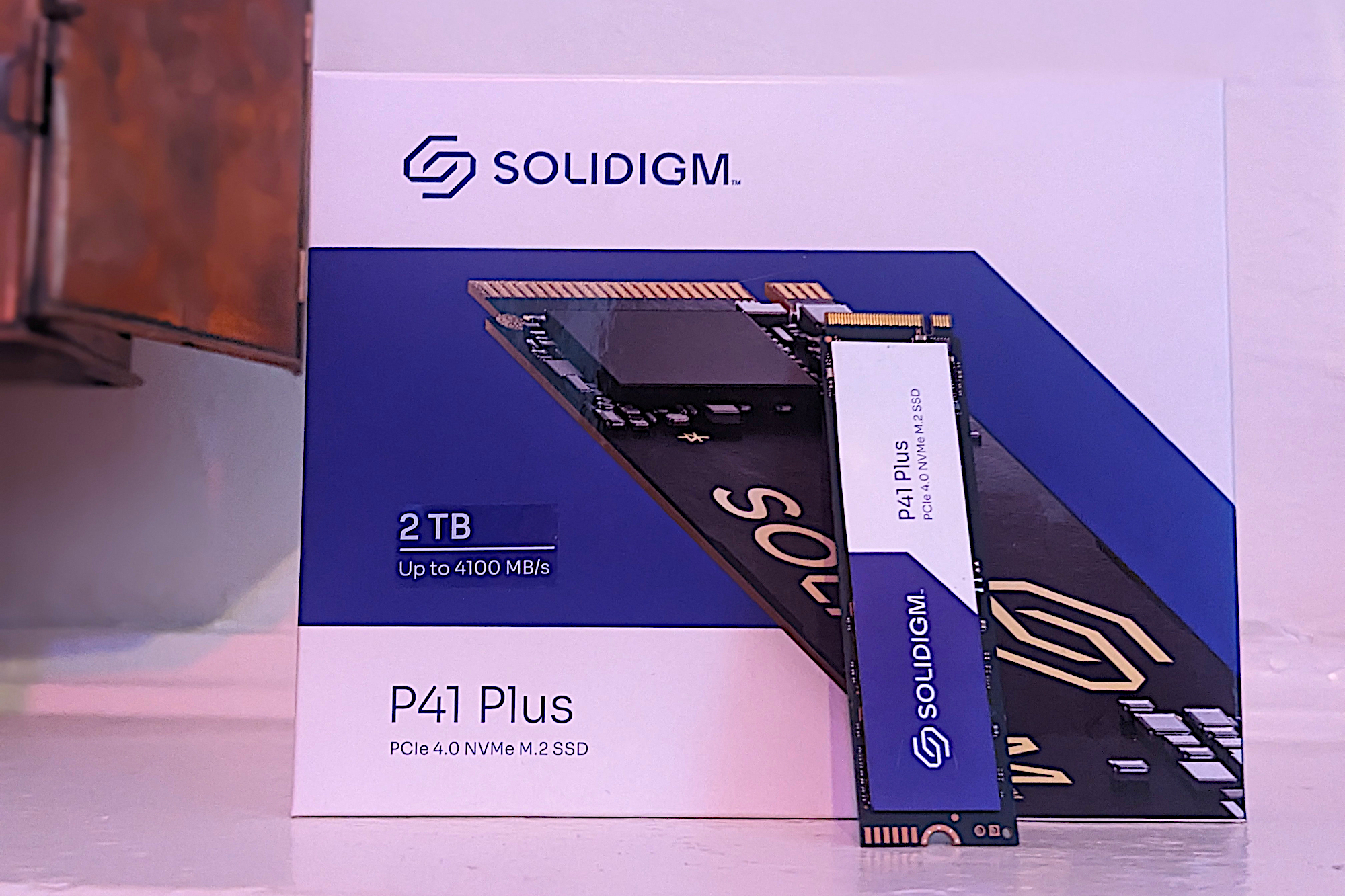


Pros
- Super affordable
- Good everyday performance
Cons
- Slowed significantly on our long 450GB write
The Solidigm P41 is a fantastic budget SSD. It provides solid real-world performance at a super-affordable price. As is the case with all budget drives, you will need to sacrifice some speed in order to save money.
The P41 slows a bit during longer writes, but it’ll still provide great everyday performance for most users. In fact, it was neck-and-neck with our favorite budget drive above, the WD Blue SN580, in terms of performance. So why did we make it the runner-up? It mostly comes down to price. The SN580 is on average, is just a bit cheaper than Solidigm’s P41. This of course can change based on retailers, sales events, or even just a stiff breeze. When choosing between the two we recommend opting for whichever is cheapest at the time.
Read our full Solidigm P41 Plus NVMe SSD review WD Black SN770M – Best PCIe 4.0 SSD for Steam Deck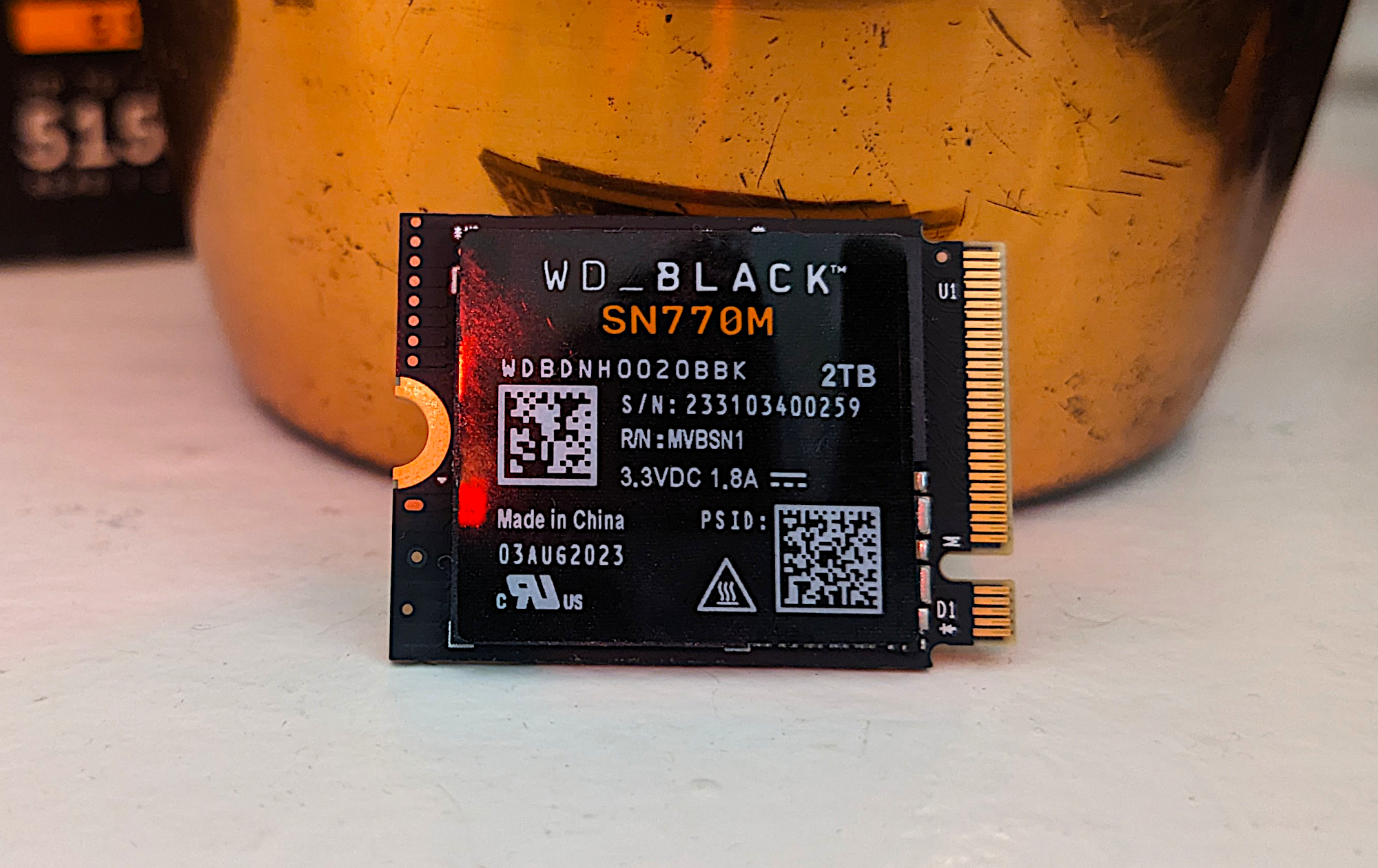


Pros
- Small 2230 form factor for handheld gaming rigs
- Up to 2TB of capacity
- Very good real-world performance
- 5-year warranty and good TBW ratings
Cons
- Slow writes when secondary cache is exhausted
- Requires host memory buffer support (HMB)
In the past, you were out of luck if you wanted to upgrade your storage in a smaller-sized device such as a handheld gaming console where the longer 2280 NVMe SSDs wouldn’t fit. Thankfully, with the advent of more advanced handheld gaming consoles such as the Steam Deck, manufacturers are changing all of that. There are bunch of half-sized 2230 small form-factor SSDs on the market, and the latest WD Black SN770M is our favorite. It comes with up to 2TB of capacity and shockingly excellent real-world performance. Its unique feature is that it’s only 30mm long, meaning you’re able to use it in small devices such as a Steam Deck.
The SN770M drive has great everyday performance and truly impressive real-world transfer speed. During our testing, it cruised through the 48GB and 450GB transfer tests, beating out other zippy full-sized PCIe 4.0 drives. While the Rocket Q4 provides decent enough capacity-to-cost, if your device is able to handle the longer, standard-sized 2280 drives, you’ll likely have more options to choose from and might be able to find even better price-for-performance. Regardless, we love this compact SSD and the SN770M from Western Digital expertly fits a niche that is only likely to grow more common with devices such as the Steam Deck in the future.
Read our full WD Black SN770M review Seagate Game Drive – Best PCIe 4.0 SSD for PS5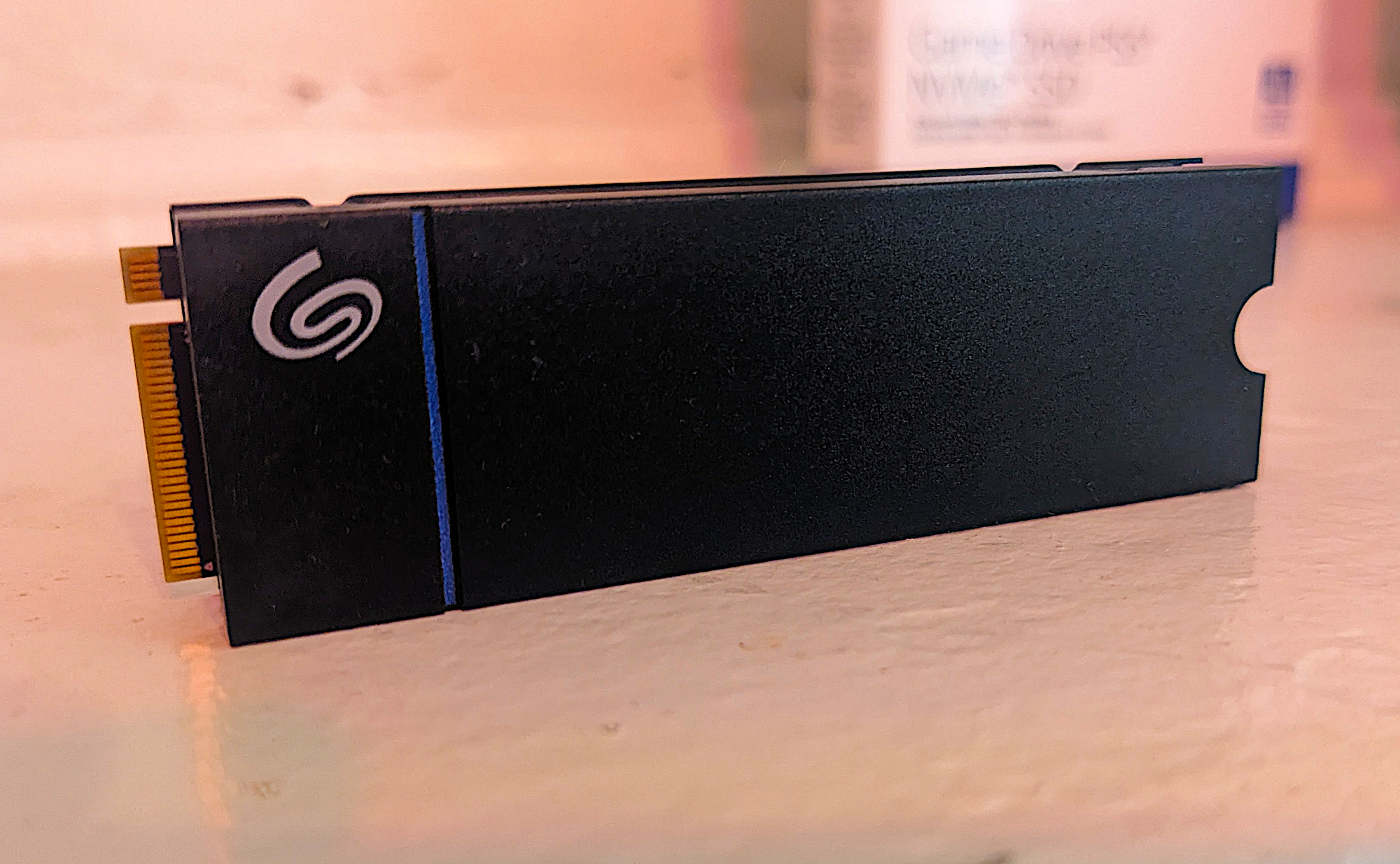


Pros
- Very good overall performance
- Excellent 4K performance
- Low-profile heatsink
- Twice the TBW rating of the competition
Cons
- A bit pricey
- No 4TB model
The Seagate Game Drive is a PCIe 4.0 NVMe SSD that was made specifically for next-gen consoles—the PS5 in particular. And it doesn’t disappoint. It features DRAM for primary caching duties, which is a bit unique and almost essential for Sony’s console system. The PS5 doesn’t support HMB, so a drive such as this with DRAM cache is the optimal choice. The drive comes in 1TB and 2TB models, meaning you’ll have plenty of space to store all of your games should you need it.
While the Seagate Game Drive is optimized for a PS5, it’s no slouch as a regular SSD either. In our speed tests it did remarkably well, earning the spot as the second-fastest PCIe 4.0 SSD with random ops that we’ve ever tested. Seagate also provides a generous five-year warranty with the drive and it has an astounding 1,275TBW rating—more than double the industry norm. PS5 owners simply can’t go wrong with the Seagate Game Drive.
Read our full Seagate Game Drive PS5 NVMe SSD review What to look for in an SSDThere are a few things to look out for, but most importantly you’ll want to focus on capacity, price, and warranty length. Three-year warranties are standard, but some nicer models are guaranteed for up to five years. And unlike the olden days of SSDs, modern drives won’t wear out with normal consumer usage, as Tech Report tested and proved years ago with a grueling endurance test.
Another crucial thing to watch out for is the technology used to connect the SSD to your PC. For more details and buying advice you can read our in-depth guide on which type of SSD you should buy.
- SATA: This refers to both the connection type and the transfer protocol, which is used to connect most 2.5-inch and 3.5-inch hard drives and SSDs to your PC. SATA III speeds can hit roughly 600MBps, and most—but not all—modern drives max it out. (More on that in the next section.)
- PCIe: This interface taps into four of your computer’s PCIe lanes to blow away SATA speeds, to the tune of nearly 4GBps over PCIe gen 3. Those sort of face-melting speeds pair nicely with supercharged NVMe drives. Both the PCIe lanes in your motherboard and the M.2 slot in your motherboard can be wired to support the PCIe interface, and you can buy adapters that allow you to slot “gumstick” M.2 drives into a PCIe lane. PCIe 4.0 drives are significantly faster, but require an AMD Ryzen 3000-series or Intel Core 11th-gen (or newer) processor, along with a compatible PCIe 4.0 motherboard.
- NVMe: Non-Volatile Memory Express technology takes advantage of PCIe’s bountiful bandwidth to create blisteringly fast SSDs that blow SATA-based drives out of the water. Check out PCWorld’s “Everything you need to know about NVMe” for a nitty-gritty deep-dive.
- M.2: This is where things get tricky. Many people assume M.2 drives all use NVMe technology and PCIe speeds, but that’s not true. M.2 is just a form factor. Sure, most M.2 SSDs use NVMe, but some still stick to SATA. Do your homework. Many modern Ultrabooks rely on M.2 for storage.
- U.2 and mSATA: You may also stumble across mSATA and U.2 SSDs, but both motherboard support and product availability are rare for those formats. Some older Ultrabooks included mSATA before M.2 became popular, and drives are still available if you need them.
Speed matters, of course, but as we said most modern SSDs saturate the SATA III interface. Not all of them, though.
How we test SSDsWe test SSDs using a variety of synthetic benchmarks (such as CrystalDiskMark 6’s various tests) and real-world tests, including 48GB transfers that showcase how a drive performs during common tasks, and also a demanding 450GB transfer test that pushes an SSD’s cache performance to the limit.
The PCIe 4.0 testing was done on an MSI MEG X570 motherboard socketing an AMD Ryzen 7 3700X 8-core CPU, using the same Kingston DRAM, cards, and software. All testing is performed on an empty, or nearly empty drive. Note: performance will decrease as the drive fills up.
Storage